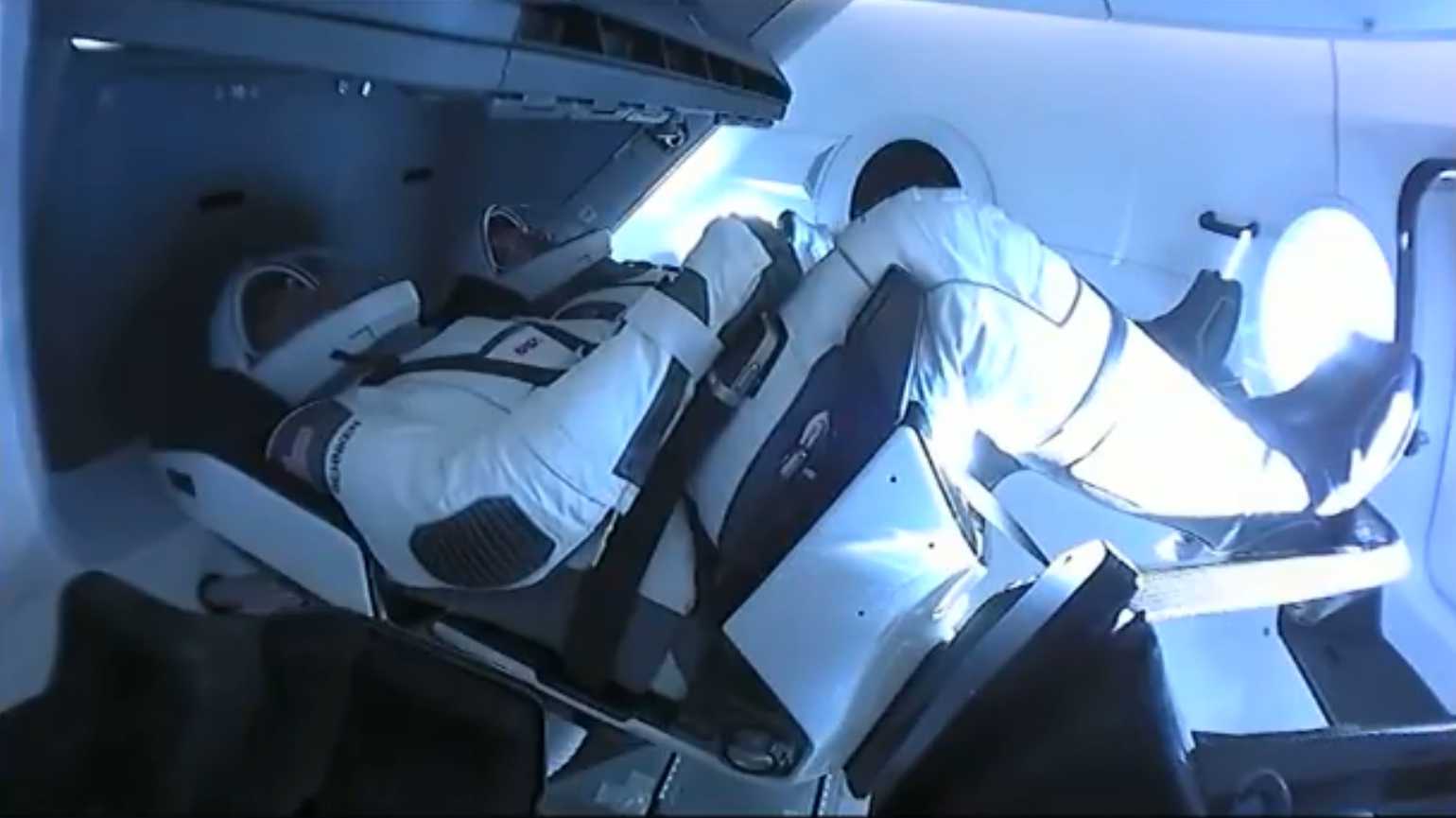
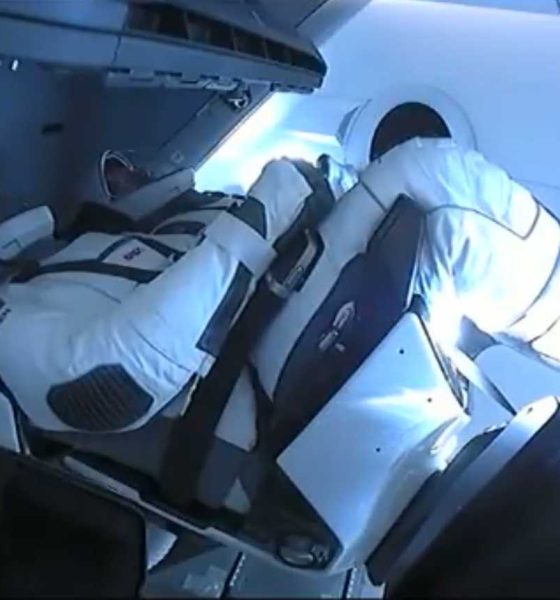
News
SpaceX Crew Dragon astronauts are chasing the space station around Earth
The morning of SpaceX’s most prolific launch – the Crew Dragon Demo-2 mission – began with one question on the mind of many, why did the Falcon 9 rocket have just one second, and one second only, to launch NASA astronauts Bob Behnken and Doug Hurley to the International Space Station (ISS)? A simplified answer is orbital mechanics and a carefully planned out 19 hour trip around the planet.
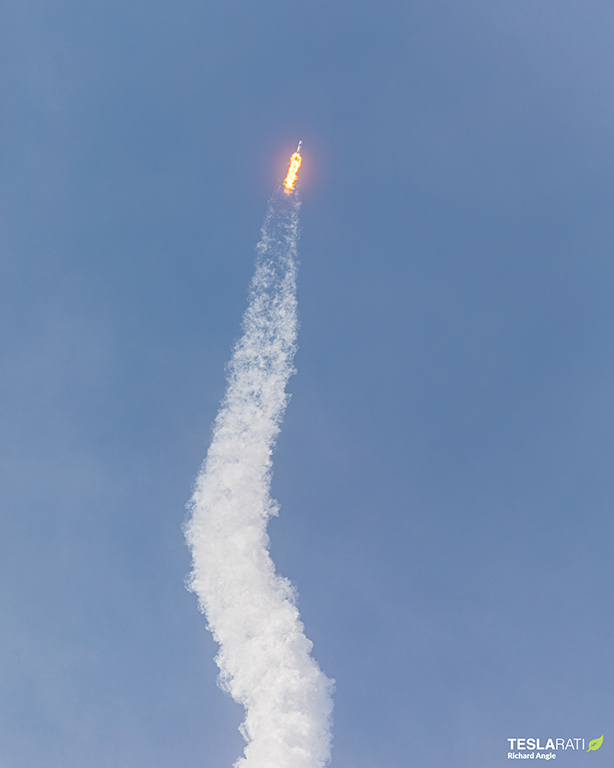
Richard Angle for Teslarati)
The launch of the Falcon 9 was a highly anticipated moment, however, it was easily the most familiar part of the Demo-2 mission. Leading up to Demo-2, SpaceX had successfully launched twenty-eight Block 5 Falcon 9 boosters – the same type of booster that the Crew Dragon carrying Behnken and Hurley would launch on. The landing of the Falcon 9 on the autonomous spaceport drone ship in the middle of the Atlantic Ocean was also a familiar process that SpaceX had completed successfully a number of times.
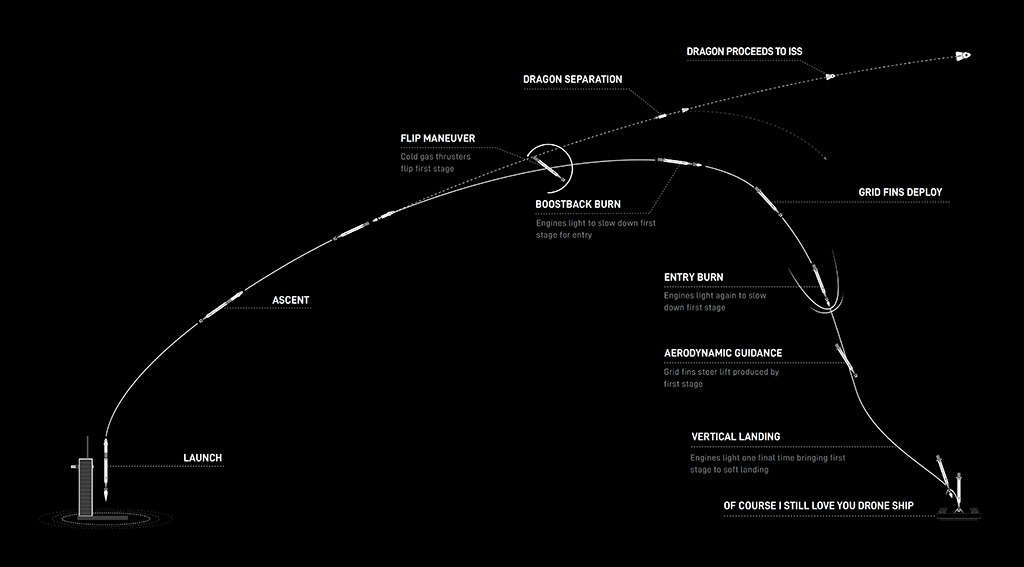
Even the Crew Dragon capsule had a launch and mission to the space station under its belt, however, launching astronauts aboard the capsule had yet to be attempted, let alone done successfully. The least familiar part of the mission was what Crew Dragon and its occupants had to achieve once free of the Earth’s gravity well.
Once past launch and separation from the Falcon 9 first stage booster, Crew Dragon would separate from the Falcon 9 second stage, enter an initial orbit, and proceed to spend the next nineteen hours chasing the ISS around the planet. The capsule had to perform a series of burns to lift its orbit high enough to match that of the ISS for autonomous docking nineteen hours later. During the trip, Behnken and Hurley had a series of items to check off prior to initiating their crew sleep aboard Crew Dragon. A few of the items included doffing – or taking off – their SpaceX pressure suits, hosting a brief media opportunity explaining the name “Endeavour” chosen for their capsule as well as the zero-G indicator named “Tremor” chosen to ride along with them and eat their first meal in space.
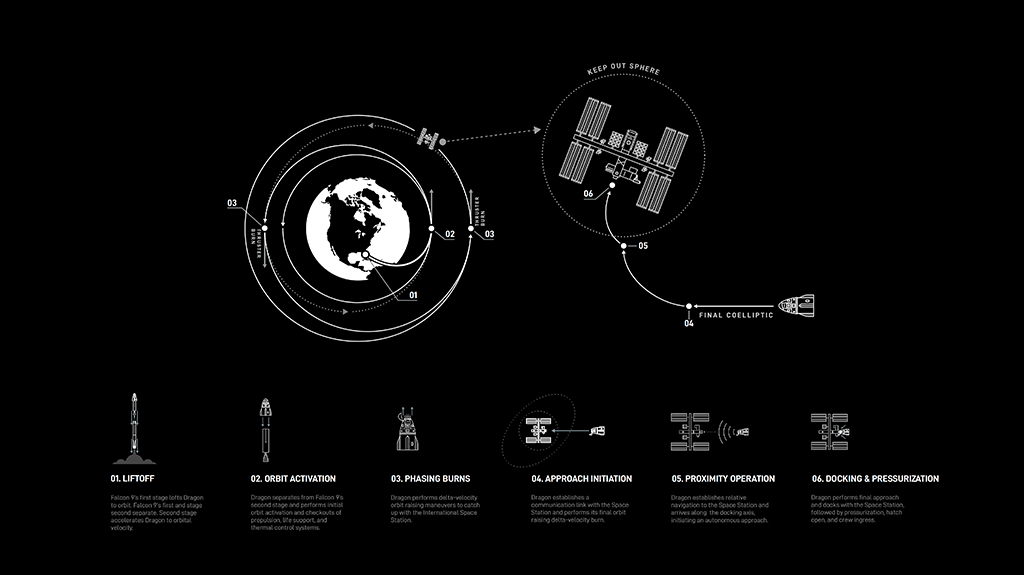
The Crew Dragon also had a few jobs of its own to complete. Crew and capsule would spend about two hours performing 3 different burns of the sixteen Draco thrusters outfitted all around the Crew Dragon’s outer shell. The first phasing burn was needed to insert it into the correct orbit, followed a little while later by a boost burn to raise the capsule’s orbit even more. And lastly, a close coelliptic burn to flatten out the orbit around the Earth making it more elliptical, rather than circular matching that of the ISS. These three burns were completed while the crew was awake performing any necessary tasks. Two more burns remained to be completed, but those would need to occur much closure to docking with the ISS, one while the crew slept and one just before autonomous docking procedures were set to begin.
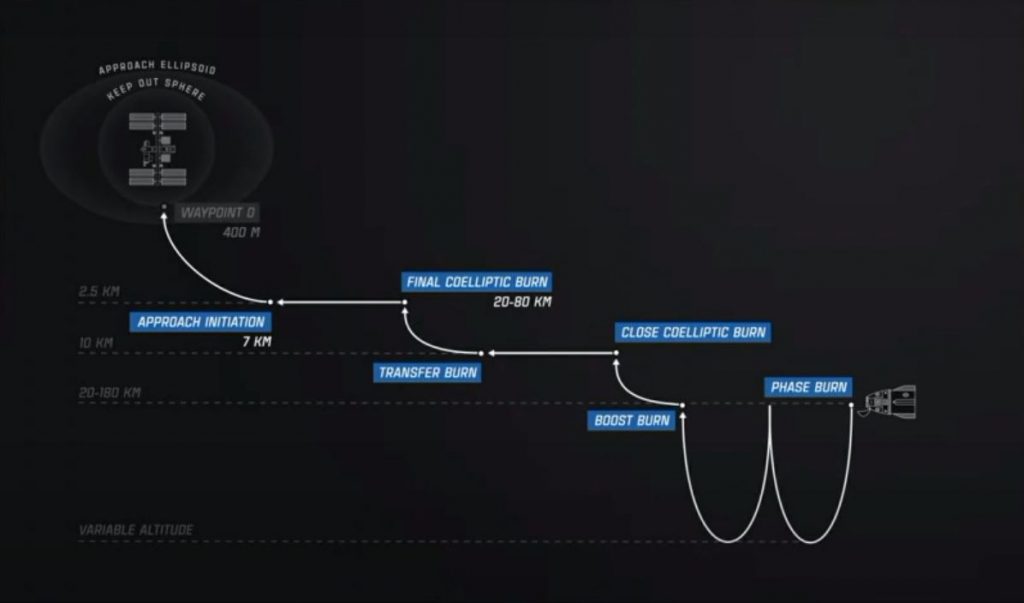
The fourth burn – a transfer burn – is intended to raise the capsule the final ten meters in orbital space to match that of the ISS. This burn will allow the capsule to begin its final approach toward the station. It will be completed by the SpaceX mission control ground station in Hawthorne, California while the crew sleeps. It will be a gentle burn of the Dracos lasting less than a minute.
The capsule will then burn the Draco thrusters once more for the final coelliptic burn matching its orbit directly with the ISS. At this time, the crew aboard both the Crew Dragon capsule and space station will be awake for a full day of work including the meticulous process of autonomously docking the capsule to the ISS, the opening of the hatch of Crew Dragon, and welcoming Behnken and Hurley aboard the station as members of the Expedition 63 crew.
Crew Dragon is expected to meet up with the ISS nineteen hours after liftoff. Docking with the station is set to occur on Sunday, May 31st around 10:30 am EDT/14:30 UTC. Behnken and Hurley will be welcomed aboard the station during a traditional crew welcoming ceremony that should occur about two hours after docking has been confirmed.
Check out Teslarati’s newsletters for prompt updates, on-the-ground perspectives, and unique glimpses of SpaceX’s rocket launch and recovery processes.

News
Tesla launches its coolest gift idea ever just a few weeks after it was announced
“Gift one month of Full Self-Driving (Supervised), which allows the vehicle to drive itself almost anywhere with minimal intervention.”

Tesla has launched its coolest gift idea ever, just a few weeks after it was announced.
Tesla is now giving owners the opportunity to gift Full Self-Driving for one month to friends or family through a new gifting program that was suggested to the company last month.
The program will enable people to send a fellow Tesla owner one month of the company’s semi-autonomous driving software, helping them to experience the Full Self-Driving suite and potentially help Tesla gain them as a subscriber of the program, or even an outright purchase.
Tesla is going to allow owners to purchase an FSD Subscription for another owner for different month options
You’ll be able to gift FSD to someone! https://t.co/V29dhf5URj
— TESLARATI (@Teslarati) November 3, 2025
Tesla has officially launched the program on its Shop. Sending one month of Full Self-Driving costs $112:
“Gift one month of Full Self-Driving (Supervised), which allows the vehicle to drive itself almost anywhere with minimal intervention. All sales are final. Can only be purchased and redeemed in the U.S. This gift card is valued at $112.00 and is intended to cover the price of one month of FSD (Supervised), including up to 13% sales tax. It is not guaranteed to cover the full monthly price if pricing or tax rates change. This gift card can be stored in Tesla Wallet and redeemed toward FSD (Supervised) or any other Tesla product or service that accepts gift card payments.”
Tesla has done a great job of expanding Full Self-Driving access over the past few years, especially by offering things like the Subscription program, free trials through referrals, and now this gift card program.
Gifting Full Self-Driving is another iteration of Tesla’s “butts in seats” strategy, which is its belief that it can flip consumers to its vehicles and products by simply letting people experience them.
There is also a reason behind pushing Full Self-Driving so hard, and it has to do with CEO Elon Musk’s compensation package. One tranche requires Musk to achieve a certain number of active paid Full Self-Driving subscriptions.
More people who try the suite are likely to pay for it over the long term.
News
Tesla expands Robotaxi app access once again, this time on a global scale
Tesla said recently it plans to launch Robotaxi in Miami, Houston, Las Vegas, Phoenix, and Dallas.
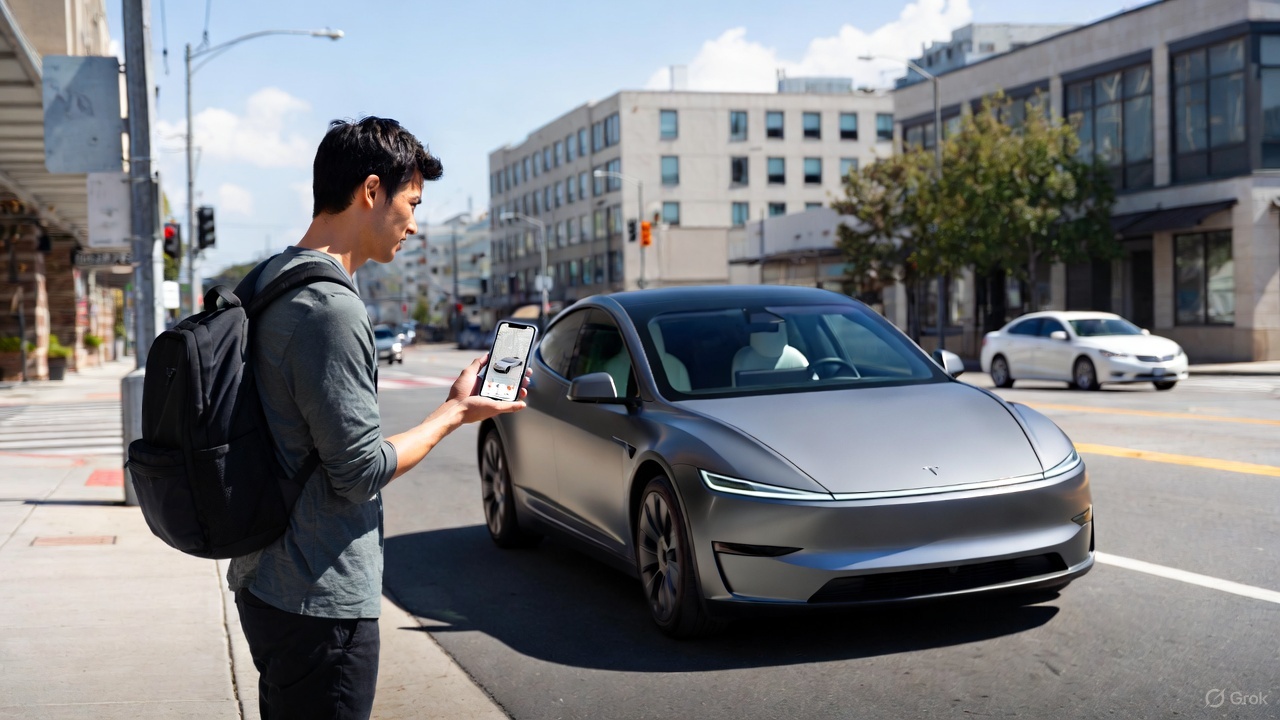
Tesla has expanded Robotaxi app access once again, but this time, it’s on a much broader scale as the company is offering the opportunity for those outside of North America to download the app.
Tesla Robotaxi is the company’s early-stage ride-hailing platform that is active in Texas, California, and Arizona, with more expansion within the United States planned for the near future.
Tesla said recently it plans to launch Robotaxi in Miami, Houston, Las Vegas, Phoenix, and Dallas.
The platform has massive potential, and Tesla is leaning on it to be a major contributor to even more disruption in the passenger transportation industry. So far, it has driven over 550,000 miles in total, with the vast majority of this coming from the Bay Area and Austin.
First Look at Tesla’s Robotaxi App: features, design, and more
However, Tesla is focusing primarily on rapid expansion, but most of this is reliant on the company’s ability to gain regulatory permission to operate the platform in various regions. The expansion plans go well outside of the U.S., as the company expanded the ability to download the app to more regions this past weekend.
So far, these are the areas it is available to download in:
- Japan
- Thailand
- Hong Kong
- South Korea
- Australia
- Taiwan
- Macau
- New Zealand
- Mexico
- U.S.
- Canada
Right now, while Tesla is focusing primarily on expansion, it is also working on other goals that have to do with making it more widely available to customers who want to grab a ride from a driverless vehicle.
One of the biggest goals it has is to eliminate safety monitors from its vehicles, which it currently utilizes in Austin in the passenger’s seat and in the driver’s seat in the Bay Area.
A few weeks ago, Tesla started implementing a new in-cabin data-sharing system, which will help support teams assist riders without anyone in the front of the car.
Tesla takes a step towards removal of Robotaxi service’s safety drivers
As Robotaxi expands into more regions, Tesla stands to gain tremendously through the deployment of the Full Self-Driving suite for personal cars, as well as driverless Robotaxis for those who are just hailing rides.
Things have gone well for Tesla in the early stages of the Robotaxi program, but expansion will truly be the test of how things operate going forward. Navigating local traffic laws and gaining approval from a regulatory standpoint will be the biggest hurdle to jump.
Investor's Corner
Tesla gets price target boost, but it’s not all sunshine and rainbows
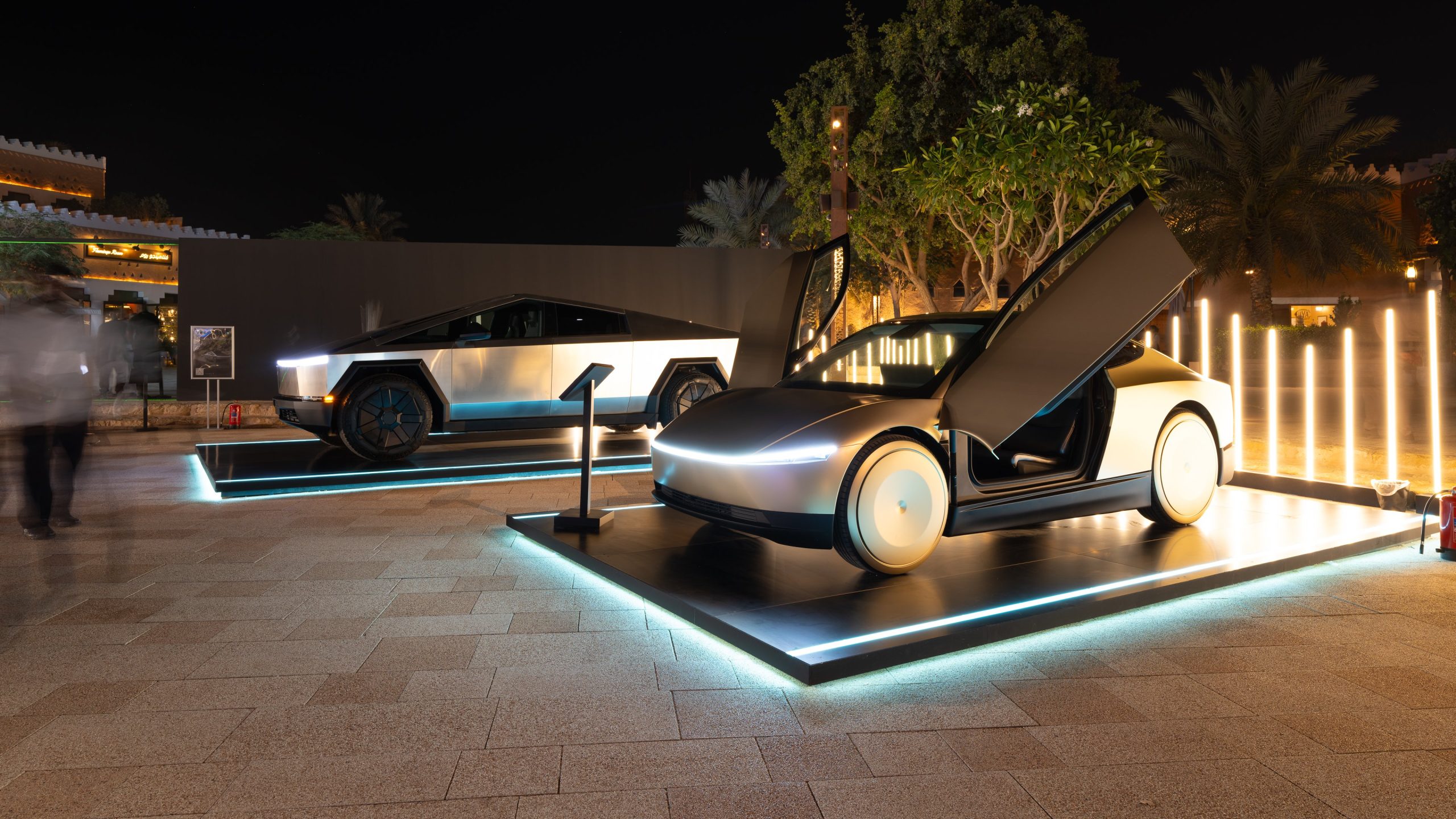
Tesla received a price target boost from Morgan Stanley, according to a new note on Monday morning, but there is some considerable caution also being communicated over the next year or so.
Morgan Stanley analyst Andrew Percoco took over Tesla coverage for the firm from longtime bull Adam Jonas, who appears to be focusing on embodied AI stocks and no longer automotive.
Percoco took over and immediately adjusted the price target for Tesla from $410 to $425, and changed its rating on shares from ‘Overweight’ to ‘Equal Weight.’
Percoco said he believes Tesla is the leading company in terms of electric vehicles, manufacturing, renewable energy, and real-world AI, so it deserves a premium valuation. However, he admits the high expectations for the company could provide for a “choppy trading environment” for the next year.
He wrote:
“However, high expectations on the latter have brought the stock closer to fair valuation. While it is well understood that Tesla is more than an auto manufacturer, we expect a choppy trading environment for the TSLA shares over the next 12 months, as we see downside to estimates, while the catalysts for its non-auto businesses appear priced at current levels.”
Percoco also added that if market cap hurdles are achieved, Morgan Stanley would reduce its price target by 7 percent.
Perhaps the biggest change with Percoco taking over the analysis for Jonas is how he will determine the value of each individual project. For example, he believes Optimus is worth about $60 per share of equity value.
He went on to describe the potential value of Full Self-Driving, highlighting its importance to the Tesla valuation:
“Full Self Driving (FSD) is the crown jewel of Tesla’s auto business; we believe that its leading-edge personal autonomous driving offering is a real game changer, and will remain a significant competitive advantage over its EV and non-EV peers. As Tesla continues to improve its platform with increased levels of autonomy (i.e., hands-off, eyes-off), it will revolutionize the personal driving experience. It remains to be seen if others will be able to keep pace.”
Additionally, Percoco outlined both bear and bull cases for the stock. He believes $860 per share, “which could be in play in the next 12 months if Tesla manages through the EV-downturn,” while also scaling Robotaxi, executing on unsupervised FSD, and scaling Optimus, is in play for the bull case.
Will Tesla thrive without the EV tax credit? Five reasons why they might
Meanwhile, the bear case is placed at $145 per share, and “assumes greater competition and margin pressure across all business lines, embedding zero value for humanoids, slowing the growth curve for Tesla’s robotaxi fleet to reflect regulatory challenges in scaling a vision-only perception stack, and lowering market share and margin profile for the autos and energy businesses.”
Currently, Tesla shares are trading at around $441.








